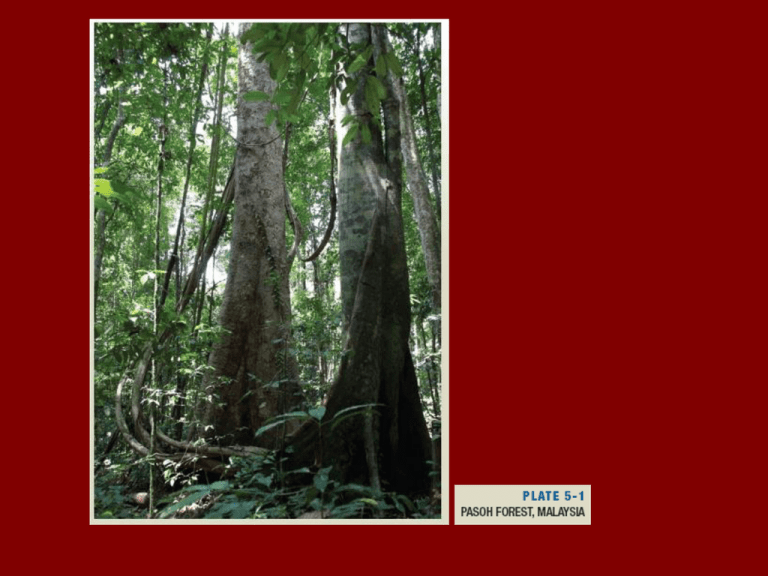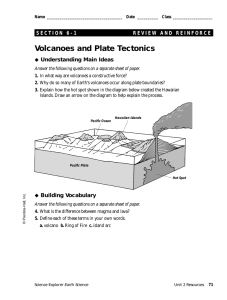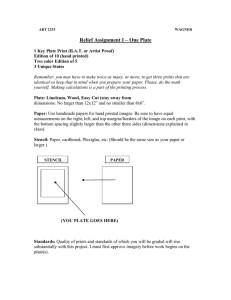Slides: Chapter 5: A Study in Biodiversity: Rain Forest Tree Species Richness
advertisement

FIGURE 5-2 The storage effects hypothesis predicts that seeds are maintained in soil for long periods. Adult trees live to have many opportunities to reproduce, but a comparison of time T1 with time T2 shows that the species richness gradually changes with time. FIGURE 5-7 The neutral theory applied to known tree species abundances on BCI shows a very close fit even though the model makes none of the assumptions contained in the preceding models. PLATE 5-4 This is one of 19,400 legume species (Fabaceae), making legumes the third largest plant family in the world. Legumes abound in the tropics, but many species range well into higher latitudes. Many legume species have feathery compound leaves, and all produce seeds in pods. FIGURE 5-11 MAP OF CURRENT CTFS SITES PLATE 5-7 The Galpagos Islands, about 1,000 kilometers (600 miles) west of Ecuador in the Pacific Ocean, provide a good example of island biogeography. PLATE 5-8 The large ground finch (Geospiza magnirostris) is one of 13 species of Darwin’s finches found on the Galapagos Islands. PLATE 5-9 This plate shows a cluster of leaves from Galápagos Miconia (Miconia robinsoniana), endemic to the Galápagos Islands and common at certain elevations on various islands. Miconia is a widespread genus with many species in the Neotropics, and thus Miconia colonized from either Central or South America. Also notice bracken fern (Pteridium aquilinum). Bracken fern colonizes widely, and many species are found in many regions throughout the world. PLATE 5-10 Green iguana, a widespread species throughout the Neotropics that has colonized the Caribbean island of Anguilla. PLATE 5-11 This is a small mangrove “island” (of Rhizophora) similar to the kinds used in the study by Simberloff and Wilson discussed earlier. PLATE 5-13 Black-faced antthrush (Formicarius analis), now extinct from BCI. FIGURE 5-20 Fitted and observed dominance–diversity distributions for trees . 10 centimeters in diameter in a 50-hectare plot in Pasoh Forest Reserve, Malaysia. The u value was 180. Note that very rare species do not fit the curve well, but all others do. FIGURE 5-22 The actual distribution of bird species and range size for (a) New World birds, (b) passerine birds in Australia, and (c) North American birds compared with the distribution in range in (d) a neutral community. The neutral community comprised 125 species. Note that the neutral model based on local dispersal among species predicts a very similar distribution to the other data sets. PLATE 5-15 The widely distributed great antshrike (Taraba major) is one of hundreds of species of suboscine birds found in the Neotropics. FIGURE 5-25 These three plots show the relationship between species richness and diversification (based on proportion of endemic species). (a) is plants in the Canary Islands, (b) is arthropods in the Canary Islands, and (c) is arthropods in the Hawaiian Islands.




